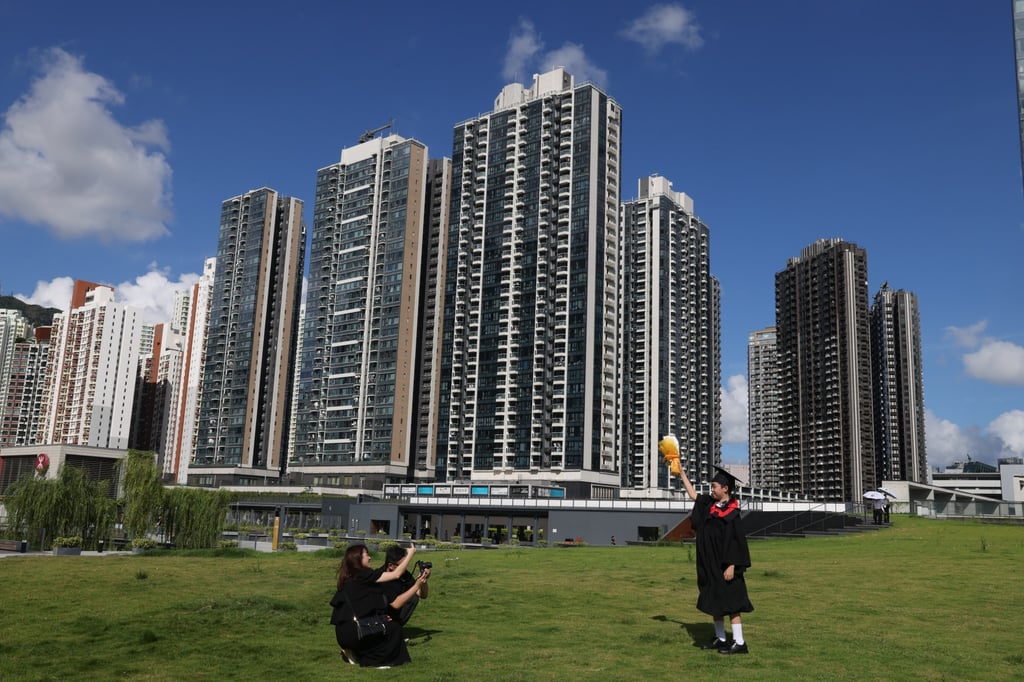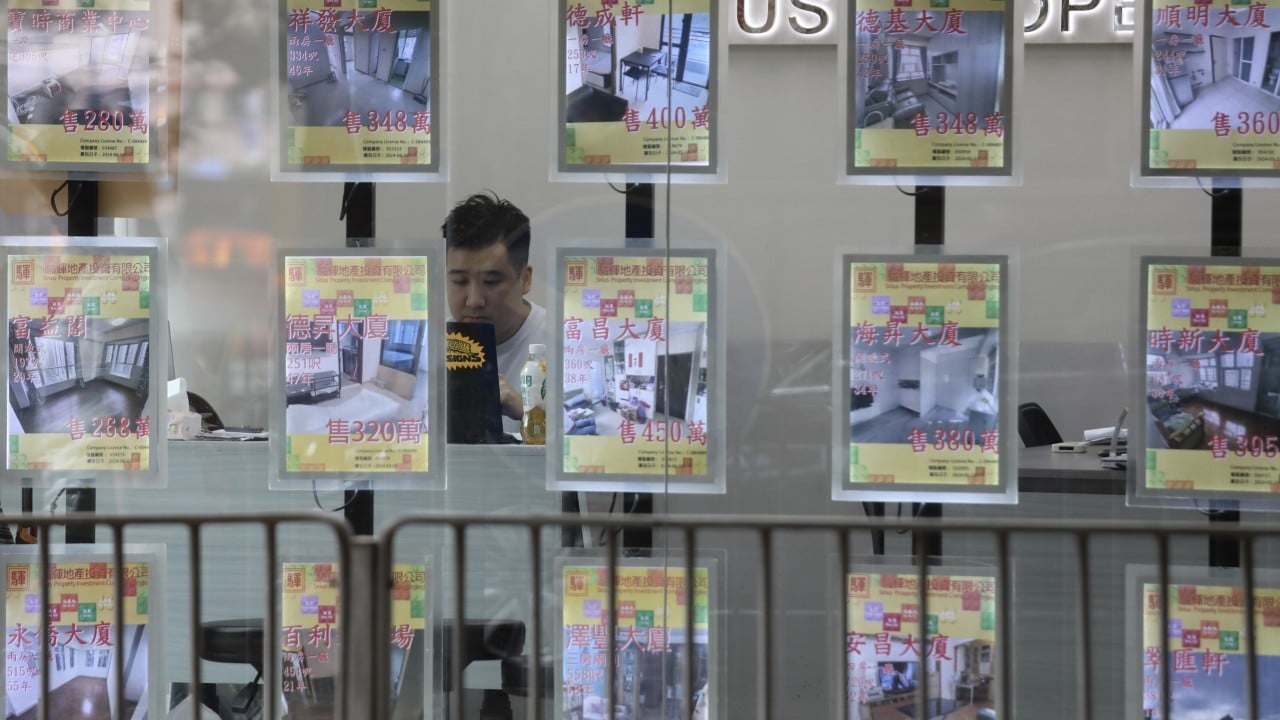Hong Kong authorities are looking at the possibility of adjusting the public-private housing ratio once the waiting time for government rental flats falls in several years, meaning commercial developers can play a bigger role in supplying living spaces.
Authorities have said the current 70-30 public-private flat ratio was set at a time when officials were primarily focused on boosting the public housing supply.
Development minister Bernadette Linn Hon-ho said the government was considering adopting a 50-50 split in some areas that fell under the Northern Metropolis mega project, which is expected to help attract talent.
The Post breaks down why the government might consider the move and the possible impacts of adjusting the housing ratio.
1. How many live in private housing in Hong Kong?
As of 2021, about 53 per cent of the city’s 7.4 million population lived in private housing, 29 per cent in public rental housing and 16 per cent in subsidised home ownership flats.
According to the latest census data, the city had 2.69 million occupied homes, of which, 45 per cent were private homes, 30.1 per cent public housing units and 15.4 per cent subsidised sale flats.
By contrast, the proportion of owner-occupied households is higher in Singapore, standing at about 89.7 per cent in 2023, according to official data.
2. Why a cap on the private housing supply?
Hong Kong’s property prices soared in the 2010s after the Asian financial crisis in 2008. It prompted the former administration, led by then-leader Leung Chun-ying, to look into formulating long-term policies to solve the housing crunch.
His administration commissioned the Long Term Housing Strategy Steering Committee to look into the matter and eventually adopted its proposal of setting the 60-40 public-private housing ratio in the coming decade.
The split was decided after considering factors such as the number of applicants queuing up for public housing, the average waiting time for such units and the aspirations of lower to middle-income households for home ownership.
Authorities also considered the upward mobility for public rental home tenants by increasing the supply of subsidised sale flats.

3. When was the ratio last modified?
The ratio was last revised in 2018 by the administration led by then leader Carrie Lam Cheng Yuet-ngor, which raised it to a 70-30 split.
Her government made the change as they observed the need to increase public housing as the average waiting time for a government-built rental flat rose from three years in March 2014 to 5.5 years in December 2018.
Officials stressed that the move – which would reduce the supply of private flats – was not intended to raise home prices, pledging to also boost the creation of land to increase the overall housing supply.
But the revised ratio failed to shorten the waiting time for public housing in the short term. The wait peaked at 6.1 years in March 2022, while the figure reached 5.7 years in March this year.
4. Why talk of adjusting the ratio?
Developers and the business sector have called on the government to adjust the ratio to let the private sector have a larger share over the past few years.
Lawmaker Jeffrey Lam Kin-fung, also a government adviser sitting on the Executive Council, suggested amending the ratio to 60-40 in March, arguing the demand for public subsidised housing had slowed down compared with the past.
Earlier this month, the Real Estate Developers Association of Hong Kong also joined the fray by urging authorities to adjust the public-private housing ratio for the 600-hectare (1,482 acres) San Tin Technopole, referring to a government plan to build an innovation and technology hub near the border with mainland China.
The association said that more private housing was necessary to support mainland and overseas talent coming to work in the proposed innovation hub – an argument supported by lawmaker Wendy Hong Wen.

5. How might a possible change affect residents?
Professor Chau Kwong-wing, director of the Ronald Coase Centre for Property Rights Research at the University of Hong Kong, said increasing the private housing supply could lower home prices in the long run and bring about affordable housing for society.
Chau conceded the property price decline could impact Hong Kong’s economy, but he argued the government could slow down land sales to control the housing supply.
While Chau argued the city was now ready to adjust the ratio, economist Andy Kwan Cheuk-chiu, director of the ACE Centre for Business and Economic Research, called on the government to thoroughly consider the impact of changing its long-term housing strategies first, given the move would bring a dip in housing prices.
It would affect the city’s economy and the revenue for public coffers, he warned.


